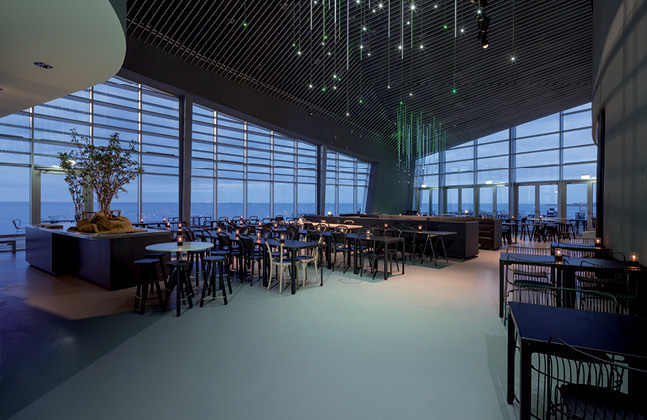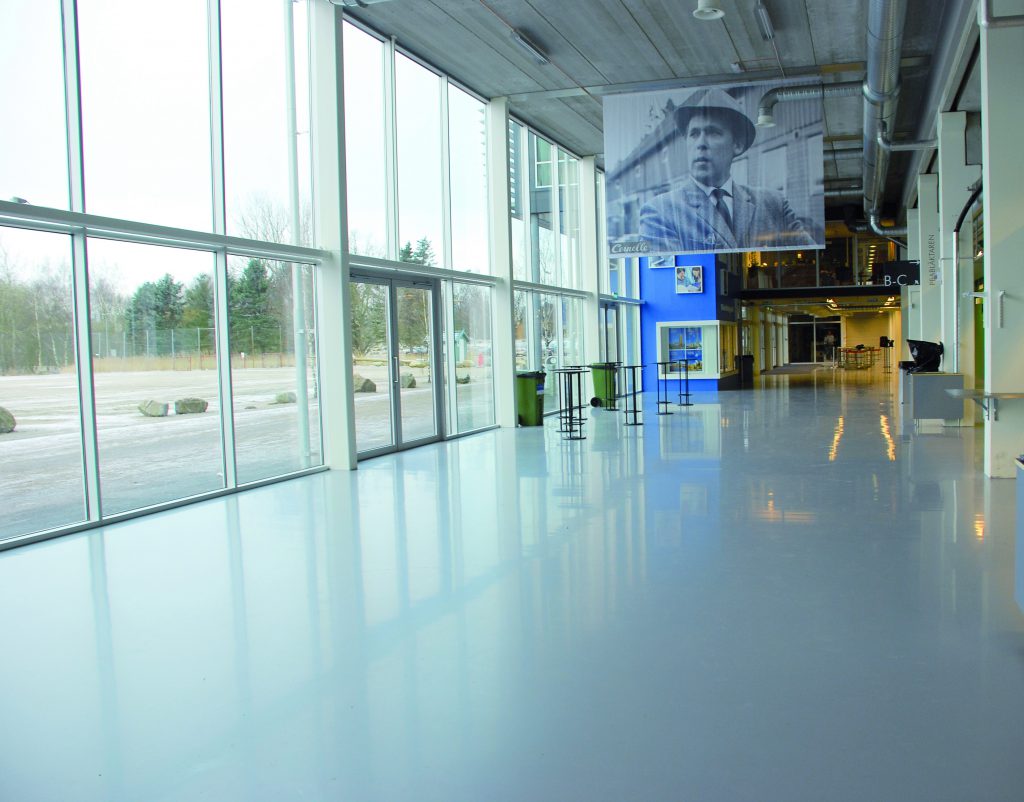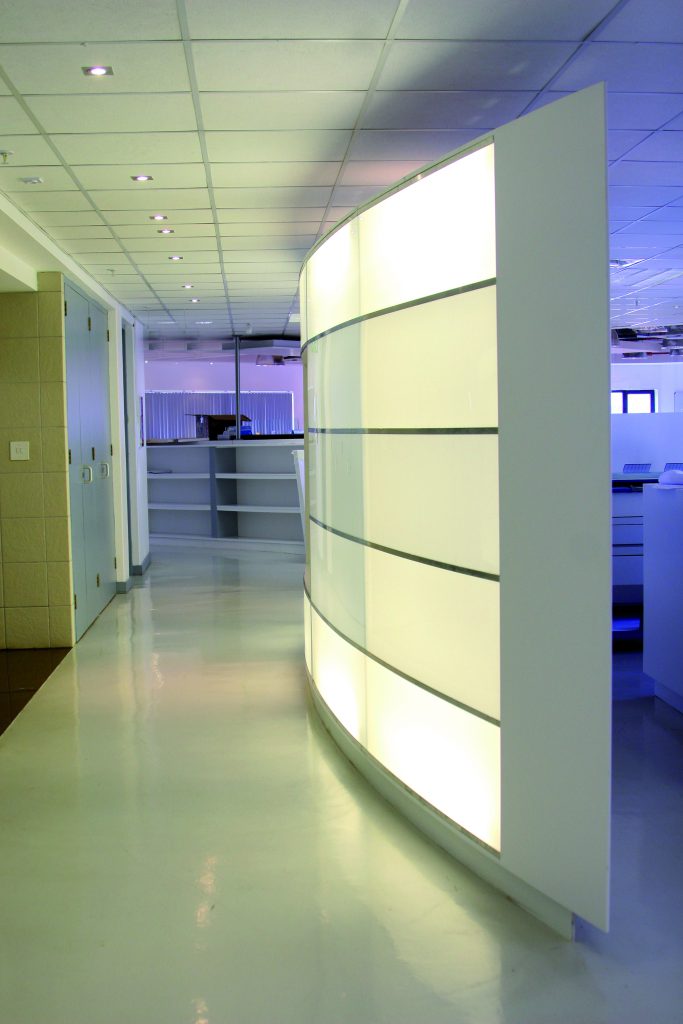Comfort style flooring systems are a product of the development of cushioning-effect type polyurethane resin flooring chemistries that have the advantage of allowing the floor to mimic the reduced acoustic and ‘comfortable’ cushioning effects of vinyl or linoleum.
This property is due to the inherent elastomeric characteristics that are created by cross linking the associated polyurethane polymer back bone (often referred to as the “polyol”) with either an aliphatic (UV Stable) or aromatic (non-UV stable) isocyanate with varying degrees of functionality and viscosity.

Comfort floors are a popular choice for restaurants and bars thanks to their smooth, cushioned and easy to clean finish.
A major advantage for comfort systems over more traditional vinyl or linoleum systems is that it is fully bonded to the substrate without the need of glues, adhesives or welded joints that often fail and cause the vinyl or linoleum floor covering to de-bond or curl at the welded seams. This is especially a problem when free moisture in the underlying substrate attacks the adhesive or glue – and if this attack leads to water ingress damaging the vinyl then the bond between the vinyl and the substrate could be compromised.

The polyurethane nature of comfort floors means that they can withstand heavy foot traffic with ease – making them a good choice for venues such as museums, offices, leisure centres, etc.
Comfort resin floors utilise moisture tolerant substrate priming systems that are robust and which provide a full physical and chemical bond between the floor and the mechanically prepared substrate.

Smooth and light reflective, comfort floors complement well-lit, contemporary interior designs.
Polyurethane comfort floors have an inherent and unique characteristic that makes them less rigid than other resin flooring chemistries such as epoxy or methyl methacrylate. This is that its deformation and recovery under loading properties means that it doesn’t need to be flexibilised by the incorporation of polyurethane chemistries within their chemically formulated matrix to enable them to become more elastomeric systems like the other types of resin floors.





